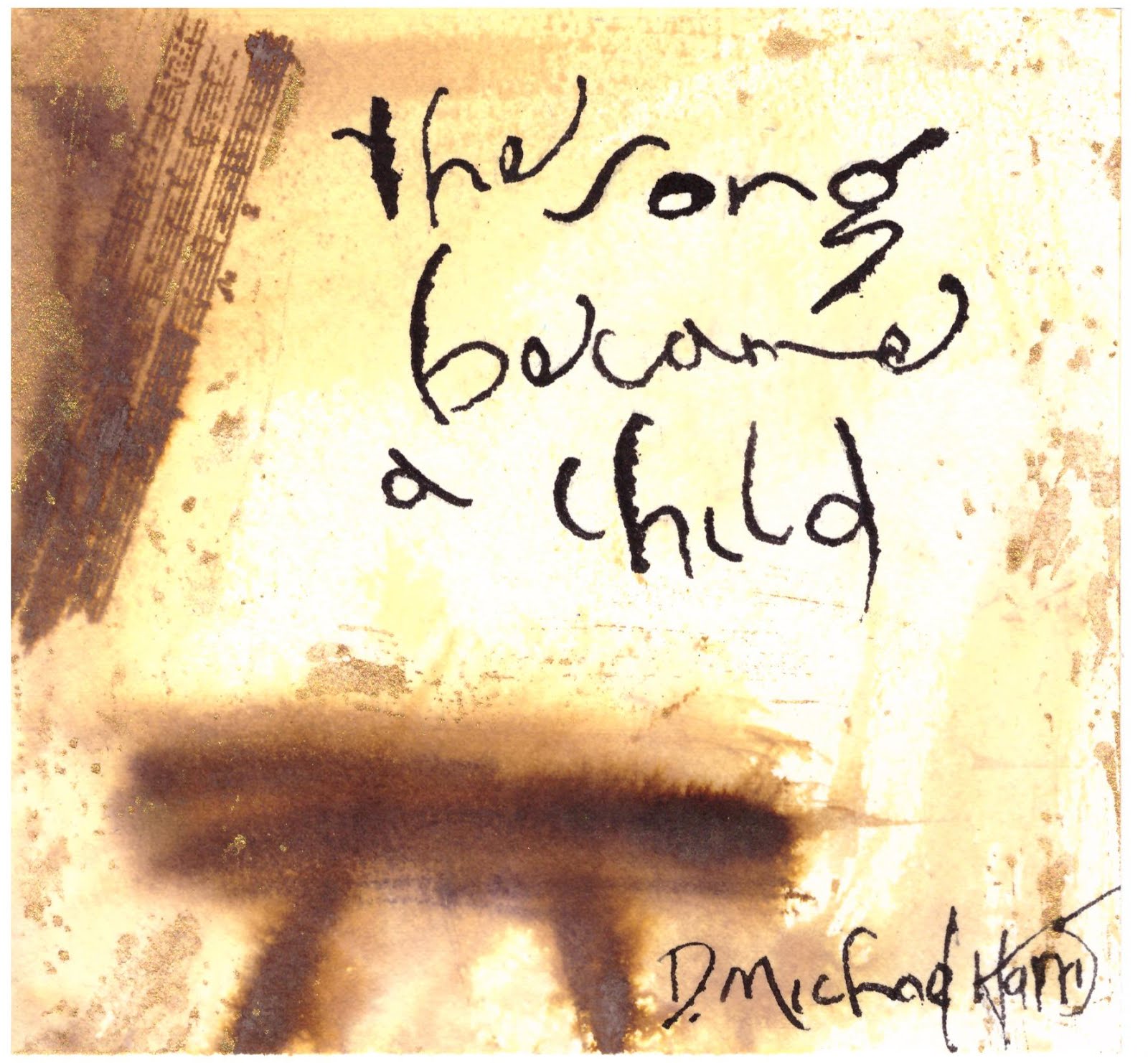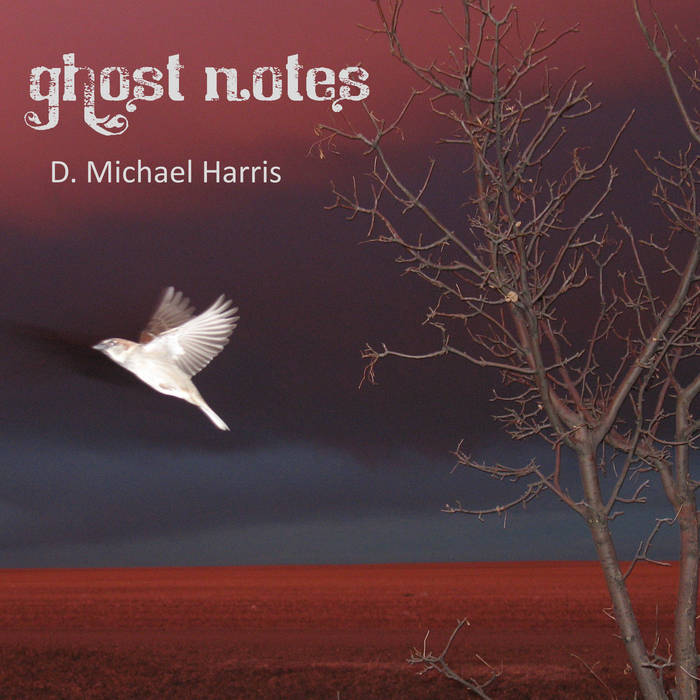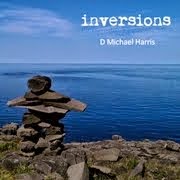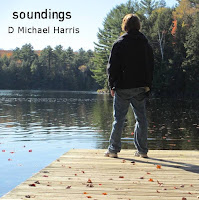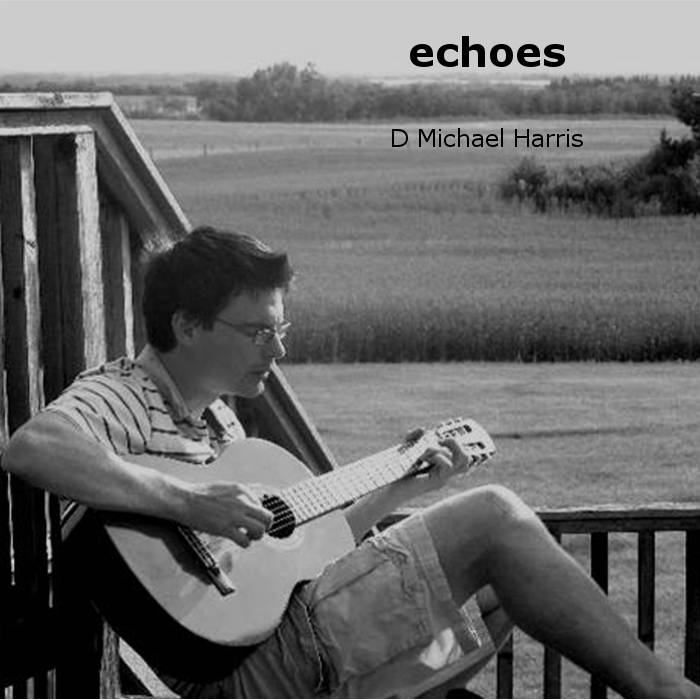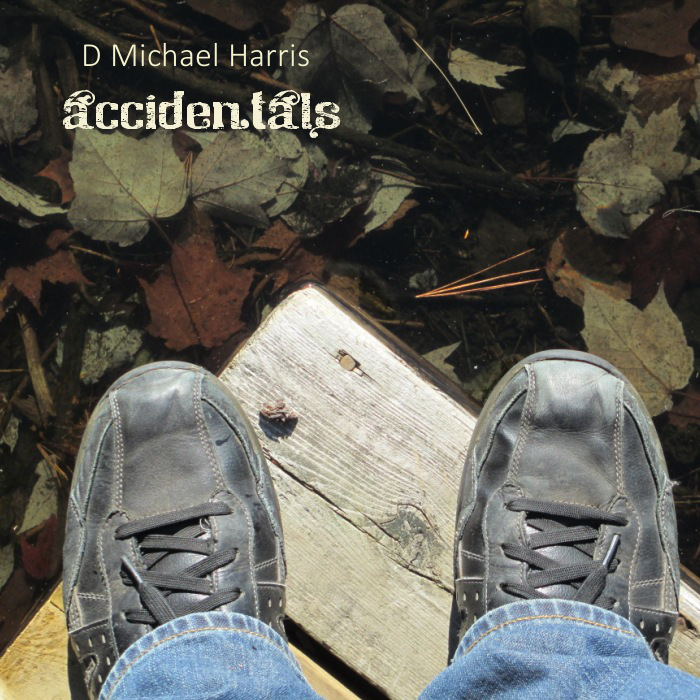A thousand angels singing in the heavens
A thousand saints rejoicing 'round your throne
Could never match the music of your laughter
The day you claimed me and called me your own
And I will worship with abandon
And I will delight in you
I wanna hear the laughter of heaven
I wanna feel you smiling over me
I wanna hear our footsteps in the garden
I wanna feel you walking next to me
A thousand footsteps wandering in darkness
A thousand footsteps longing to be free
And then you chose me and brought me from my blindness
And now your laughter washes over me
And I will worship with abandon
And I will delight in you
I wanna hear the laughter of heaven
I wanna feel you smiling over me
I wanna hear our footsteps in the garden
I wanna feel you walking next to me
And you will say to them this one was born in Zion
And you will say to them this one belongs to me
And you will say to them he's from my Holy City
And you will say to them this one was born in Zion
This one was born in Zion
This one...
I wanna hear the laughter of heaven
I wanna feel you smiling over me
I wanna hear our footsteps in the garden
I wanna feel you walking next to me
I wanna hear the laughter of heaven
I wanna feel you smiling over me
I wanna hear our footsteps in the garden
I wanna feel you walking next to me
The Laughter of Heaven, a song
Labels: songwriting
Fearfully and Wonderfully Made, Part I: A Biblical Theology of Embodiment
To develop a biblical theology of embodiment we begin with an exploration of the words that the Hebrew Scriptures use to refer to our physical bodies. Although biblical Hebrew does not have a specific word for “the body” per se, there are three distinct word groups that, depending on their usage and context, we might translate in English as “the body.” There is, for instance, the word gevı̂yâh, which occurs 13 times in the Old Testament and most often refers to a dead body—a corpse (e.g. Judg. 14:9, 1 Sam. 31:13, Ps. 110:6)—although interestingly, it is also used to refer to the angelic “bodies” of the cherubim in Ezekiel 1:11, and the “body” of the angelic messenger in Daniel 10:6.
Another term that can refer to the body is the word nephesh. This word usually refers to the whole person—body, spirit, mind, and will together—and is most often translated as “living being” (nephesh chay). In some specific cases, however, the Hebrew Scriptures use it to describe a “dead body” (nephesh mût, Lev. 21:4, Num. 6:6), suggesting that the concrete substance of the physical body was included in the meaning of the word. By far the most common word for the body, however, is bâśâr, a term that appears 270 times in the Old Testament and literally means “flesh.” While bâśâr has a wide semantic range, and can mean literal “flesh” (i.e. meat), one’s skin (the “flesh of my body”), or one’s kin (my “flesh and blood”), the word can also function as a metonym for the whole body (see Exod. 30:32; Lev. 6:3; Ps. 119:120; see especially Prov. 14:30). In Hebrew poetry, interestingly, bâśâr sometimes appears together with nephesh, as a kind of hendiadys for the “whole person” (e.g. Isa. 10:18; Ps. 63:2).
A Biblical Definition of the Body
When we examine these various terms, we discover that the Hebrew Scriptures saw “the flesh” as integral to our understanding of the person. There was no self—no nephesh—apart from the “enfleshed” self. At the same time, the Hebrew Scriptures do not have a distinct word for “the body” that refers precisely to what we mean when we use that English word. Bâśâr often describes just the literal flesh, and usually it means “body” only by extrapolation; nephesh usually refers only to the “whole self,” and usually it means “body” only by interpolation. In the Hebrew Scriptures, in other words, a person was the flesh of which he was made, and at the same time, he was far more than just his flesh.
Here we come to the difficulty of expressing a biblical theology of embodiment in contemporary English terminology, because many of the words we might use imply a nascent, spirit/matter dualism that denies the goodness of the material world, or at the very least sees it as inferior to the spiritual. This understanding of reality is foreign to the authors of the Hebrew Scriptures, who believed that God meant it when he said that the creation is “very good” (Gen. 1:31), and who tended to understand heaven and earth, not as two separate worlds but as two interlocking and overlapping realities. We run the risk of an unbiblical dualism, for instance, if we describe the body as “a vessel” or “home” for the spirit, or if we view the physical body as though it were of less consequence than the non-physical soul. The Hebrew Scriptures consistently presuppose an inseparable integrity between one’s immaterial “soul,” and one’s physical body. As Genesis 3:19 puts it, we are the dust of which we are made.
Perhaps the language of “intersections” might serve our purposes better than “vessel” or “dwelling place for the soul” terminology here. In the Hebrew understanding, we might say, the physical body is the intersection between the material and the immaterial realities that constitute the human person. It is the locus where the unseen stuff of life (reason, thought, will, imagination, emotion, spirit), and the seen (flesh and matter) come together and join as one.
Embodiment in the Hebrew Scriptures
This idea, that the body is the intersection of the seen and unseen realities that constitute the self points us toward some general implications of the Hebrew Bible’s understanding of embodiment. For instance, it eschews the idea that the physical body is somehow inferior to the immaterial soul and suggests, instead, that the body is, or was meant to be, a very good thing along with the rest of God’s good creation. In this way, the suggestion in Genesis 2:25, that in the beginning the man and the woman were naked together and unashamed takes on broader significance than simply a reference the “nakedness” of conjugal union. It implies, instead, that the human body was designed as a thing of wholesome beauty, intrinsically good as the medium through which life, love, and community was meant to be enjoyed. Although the story of the Fall may have marred this experience of “unashamed nakedness,” still the Hebrew Scriptures never retract the vision. In Psalm 139:14 we are reminded that we are “fearfully and wonderfully made,” and in Song of Solomon 5:10-16 and 7:1-9, we have sensuous celebrations of both the male and female bodies in turn, exploring them literally from head to foot without the least note of shame.
A second implication of this theological definition is that bodily life is the medium through which we both experience and participate in the blessings of the covenant. We see this in the very language of the covenant itself, which, for Abraham at least, included the promise of children and land: physical life in the physical world surrounded by physical children that came from his physical body. The sign of the covenant follows this logic, inasmuch as it was a physical mark (circumcision) on his flesh (bâśâr), on the place where progeny literally sprang from. This helps to explain the seemingly obsessive emphasis the book of Leviticus places on ritual purity. The Levitical preoccupation with blood and skin-rashes and bodily emissions is not a neurotic fixation; it is, rather, a profound affirmation of the sacredness of bodily life. Of course, the New Testament will transform the covenant so it is no longer about land or offspring, but evens so it offers us equally physical signs of our bodily participation in the blessing: the sign of baptism and the feast of communion.
This brings us to the final implication of this theological definition of the body: that the spiritual life is not separable from physical life. In Genesis 2 we read that the Lord God created the human being out of dust (‛âphâr) and breathed into him the breath of life (neshâmâh chay), and in this way he became a living being (nephesh chay). This suggests that being human involves both our physical bodies (dust) and the breath of God which gives them life (neshâmâh), and that these two are inseparable for a full understanding of what it means to be human.
Embodiment in the New Testament
As we turn from this survey of the Old Testament to explore the New, the first key text we come to is John 1:14, which unapologetically proclaims that in Jesus, the Word “became flesh” and made his dwelling among us. We start here because, if it is true that the physical body is the intersection between the seen and unseen stuff of life, then in the incarnation, we have the ultimate intersection—the intersection of heaven and earth, come together in the flesh and blood of Jesus Christ. To the extent that he is the “image of the unseen God” (Col. 1:15), the Last Adam who restores the Image of God in us, Jesus restores the Creator’s original intention for human life, including life in the body. As Valerie Hess puts it, “Jesus has a body so that he can show us how to live more fully integrated in body and heart within our own body.” In “taking on” flesh and blood, we might say, Christ makes possible the “naked and unashamed” experience of bodily life, and with it the Creator’s affirmation of the physical body, that we glimpse in Genesis 2.
Unlike the Hebrew Scriptures, which lacked a distinct word for the body, the New Testament terminology is both more precise and more nuanced. As we explore the various terms it employs, we discover that the New Testament more clearly differentiates between our physical selves and our spiritual selves, but it does so still without undermining the holistic integration of the two that we see in the Hebrew Scriptures. Among the many terms in Greek which we might translate as “the body,” we have ptōma, which refers specifically to a dead body and functions in a way similar to the Hebrew word gevı̂yâh. There is also the word chrōs, which occurs only once (Acts 19:12) and refers specifically to the skin or the surface of the body. The predominant term in the Greek New Testament, however, is sōma, which functions in roughly the same way its English equivalent, “the body.” It can describe a living or dead body, the body of a man or animal, or a metaphorical “body” of people (e.g. the church). In a few places the New Testament establishes a strong distinction between the “body” (sōma) and the “soul” (psuchē), sometimes even presenting the one in contrast to the other. Paul commends the Thessalonians, for instance, to the one who is able to keep their “whole spirit, soul and body” blameless (1 Thess. 5:24), and Jesus enjoins us not to fear the one who can only harm the body and not the soul, but to fear instead the one who can “destroy both body and soul” (Matt. 10:28).
The Greek New Testament also uses the term sarx, which literally means “flesh” and can be used as a metonym for the whole body in a way similar to the Hebrew word bâśâr (e.g. Heb. 9:13). It should be noted, however, that this is not as common a usage as it is for bâśâr. Paul famously uses the term to describe the sinful human nature (e.g. Rom. 7:18), and carefully distinguishes “flesh” from the literal body (sōma). In his usage, sarx is opposed to the spiritual nature (pneuma, Gal 5:16-18) and the body (sōma) can be guided either by the flesh or by the spirit; that is, we can be led to act in sinful ways or in godly ways depending on which of these two influences we follow (see especially Rom. 8:13).
A final term worth mentioning here is the Greek word skēnōma, which literally means “tent” or “tabernacle,” and occurs twice as an apparent reference to the body. In 2 Peter 1:14 it speaks of “putting off my tent” and in 2 Corinthians 5:1 it speaks of our “earthly tent” being destroyed, in both cases using the imagery as an euphemism for death. This specific imagery may seem like a break from the body/soul integration that we observed in Old Testament anthropology, suggesting perhaps that the body is merely a disposable “tent” which houses the (more significant) soul. It should be noted, however, that in both instances the emphasis is on the temporary nature of earthly life (so in 2 Cor. 4:18—“what is seen is temporary,” and in 2 Pet. 1:14—“I will soon put off my tent”). This suggests that the point of the skēnōma imagery is to stress the transience and impermanence of the body, not to create an ontological division between it and “the soul.”
What stands out in this brief overview is that the New Testament’s biblical anthropology is consistent with that of the Old Testament, but it also adds two theologically important layers to our understanding. First, we note that, unlike the Old Testament, which believed that God’s Spirit was “in us” to the extent that we are living beings and all living beings are brought to life by his ruach (e.g. Ps. 104:29-30), the New Testament develops this notion further to suggest that through Christ the human body could actually become a “temple” of the Holy Spirit, in a way that transcends anything we discover in the Old Testament. The most obvious passage related to this idea is 1 Corinthians 6:12-20, where Paul argues against sexual immorality on the basis of the fact that the Christian’s physical body has become a “Temple of the Holy Spirit, who is in you, whom you have received from God” (v. 19). The implication here is that the physical body has become “filled” with the Holy Spirit in a way that parallels the filling of the Old Testament Temple with the shekinah Glory of the Lord. This underscores but also transforms our previous discussion about the sacredness of bodily life.
Second, the New Testament suggests that, as good as it is, there is still something incomplete about life in the body, this side of the Resurrection, and that the fulfillment of the Creator’s intention for bodily life is yet to come. We see this, for instance, when Paul assures the Philippian church that God will “transform our lowly bodies so that they will be like his glorious body” (Phil. 3:21). We see it also in the discussion of the resurrection body in 1 Corinthians 15, where Paul compares death to the sowing of a seed. We are “sown [as a] natural body,” he claims, and we will be “raised [as a] spiritual body,” a phrase that is not meant to describe some disembodied spiritual existence in Heaven, but resurrection embodiment in the New Creation, a body that is “spiritual” in the sense that it is filled, empowered, and brought to life by the Spirit of God. The incompleteness of bodily life comes into sharp focus in Romans 8:18-27 especially, where Paul describes the “groanings” we experience in this life and looks ahead hopefully to “the redemption of our bodies” (v. 23). Contrary to popular Christian notions of life after death as some disembodied bliss, the New Testament consistently maintains that bodily life will continue to matter in the life to come, and that the Christian hope is not simply the redemption of our immaterial souls, but the redemption—the physical resurrection—of our bodies. This knowledge transforms our experience of embodiment in this life. On the one hand, it reminds us that what it fully means to be embodied is not yet known but only glimpsed in the resurrection body of Jesus Christ. On the other hand, the promise of resurrection glory is a profound affirmation of the goodness of the body that should inspire us to enjoy bodily life with deep thanksgiving.
Living out the Meaning of the Body
The theology of embodiment developed in this paper—that the human body is the intersection of the seen and unseen aspects of our life before God—suggests a number of important implications for Christian ministry and spirituality. It suggests, for instance, that from God’s perspective, there is far more to our physical bodies than meets the eye. More than simply the corporeal matter which houses our spirits, our bodies have great potential to effect profound spiritual change in the world. MaryKate Morse touches on this aspect of embodiment in her discussions of the embodied nature of leadership, arguing that leaders “carry [their] influence in their bodies,” and that effective leaders manage “the use of their bodies in relational space” in order to effect change in the world. She suggests that the physical body is the medium through which we experience and convey presence, power, and influence, reminding us that “interactions in physical space define who is seen and heard and valued, and who is not; who has power, and who does not.” In a slightly different vein, Rob Moll argues that the physical anatomy of our bodies especially equips us for the spiritual life, that “our body’s design enables us to commune with God and to fellowship more closely with others.” Citing recent discoveries in neuroscience, he maintains that on a biological level, “our relationship with God is profoundly connected to what is happening inside of us, in our bodies.” We are the dust of which we are made after all, but that dust, it seems, is far more than mere dust.
A second implication of the theological definition of the body developed in this paper is that a healthy acceptance and even embrace of our own bodies is a vital aspect of our spiritual formation. Tara Owen makes this point repeatedly and eloquently in her study of the spiritual meaning of the body. “Our bodies don’t lie,” she claims, “and what they tell us about how we perceive reality is the key to stepping into actual transformation in Christ.” Elsewhere she argues that “alienation from our bodies is a form of alienation from God,” and that “[a] refusal to receive God’s redemption in our bodies is a symptom of [our] state of leb shabar [i.e. having a shattered heart].” In a related way, Valerie Hess and Lane Arnold argue that “the unity of the body with the soul influences our walk with Christ.” They urge us to become aware of “the connection between what happens in [our bodies] and what happens in [our souls].”
There are more implications we could point to here. We could discuss, for instance, the vital connection between soul care and body care, the way in which caring for one’s physical health and well being is an important discipline of the spiritual life. Ken Shigematsu makes this point emphatically in his book on developing a rule of life, where he argues that “physical practices are also spiritual practices,” and “when we attend to the basic needs of our bodies, we will likely find ourselves more attentive to God and more available to people.” Valerie Hess makes a similar point when she argues that “self-care is a godly activity.” In addition to the importance of stewarding our physical health, we might also point out the importance of bodily engagement in our worship and prayer life. In Praying Body and Soul, for example, Jane Vennard encourages Christians to become more “attuned to the messages our bodies send us” so that we can discover “important information about community prayer and our liturgical practices.” When our bodies are engaged in worship this way, as Hess and Arnold suggest, we find that “our bodies offer a language of love to God” that deepens and often transcends our words. And here, in this “embodied language of love,” at the intersection of our seen and unseen selves, we may discover the fullest meaning of the Psalmists declaration of adoration: “I praise you because I am fearfully and wonderfully made.”
Labels: embodiment, seminary, theology
Charmed, I'm Sure, a song
And I didn’t have a clue
The day this heart met yours
What was falling from the blue
Or how high we would soar
Cause angels, elves and seraphim
Were knocking on my door
An enchanted rendezvous
And I didn’t notice
I was charmed, I’m sure
The day I met you I was charmed, I’m sure
I didn’t know what was in store
But even if I could’ve, well I would’ve
Been charmed I’m sure
There was something in the air
A fire in the sky
It was shining everywhere
Bedazzling my eyes
Cause angels, elves and seraphim
We helping me to fly
With a song and on a prayer
And I didn’t notice
I was charmed, I’m sure
The day I met you I was charmed, I’m sure
I didn’t know what was in store
But even if I could’ve, well I would’ve
Been charmed I’m sure
Labels: music, songwriting
Back to the Beginning with God: An Exegetical Analysis of 1 Kings 19:9-18
The well-known story of Elijah’s encounter with God on the slopes of Mount Horeb, with its intense theophanic imagery and its enigmatic description of the “small still voice of God,” has always been an eminently preachable text, lending itself well to powerful pulpit orations and Sunday School flannel graphs alike. Most expositions of this passage tend to focus on the presence of God in the small still voice of verse 12, drawing from this mysterious phraase either moralistic lessons about the importance of silence in the spiritual life or theological lessons about God’s unexpected presence in the stillness (so Rob Bell’s 2005 Nooma video, “Noise”). A close reading of this passage in context, however, suggests there is something more going on than simply a commendation to spiritual silence. Given its place in the Book of King’s account of the on-going struggle between Yahwehism and Baalism for the hearts Israel, given its ambivalent portrayal of Elijah as an embattled champion of Yahweh, and given especially its intertextual connections with the book of Exodus, 1 Kings 19:9-21 seems to be asking profound questions about the role of the covenant in the religious life of ancient Israel, more than it is speculating generally about whether God speaks with a booming voice or a gentle whisper. Careful analysis suggests that the point of this passage is that God’s covenant with Israel rests on YHWH’s faithfulness, not on the people’s, and that, so long as it stands on this foundation, God himself will see it fulfilled, however faithless Israel herself may become.
Historical Context
To understand the point this story is making about the covenant, it is helpful to bear in mind its historical provenience. Elijah’s flight to Horeb occurs during the reign of Ahab, the 8th king of Israel. He likely came to the throne some time around 874 BCE, the son of the previous king Omri (1 Kings 16:29). It is notable that Ahab’s reign represents the first dynastic succession in Israel after a series of political and military coups; that is to say, Ahab is the first king of Israel to reign in the place of his father since Elah, some four kings and ten years previous. This is significant in that it sets the question of the legitimacy of Ahab’s reign clearly in the backdrop of the Elijah narrative.
At the same time, it is equally notable that Elijah is the first major prophet to emerge in the post-Davidic era. Previous prophets (like Nathan in 2 Samuel 12) tended to be court prophets serving more as “seers” for the king, than as independent prophetic voices. There are certainly independent prophets mentioned in 1 Kings prior to Elijah, of course (the “Man of God” in 1 Kings 13, or Ahijah in 1 Kings 14), but these tend to be the secondary characters in a narrative focusing especially on the activity of the reigning king. The story of Elijah is the first time a prophet takes centre stage in a narrative focused specifically on him. This is significant in that it suggests a growing tension between the royal administration and the prophetic community in Israel, as the monarchy moves further and further away from the Davidic ideal.
Finally we note the role of Jezebel, Ahab’s Phoenician wife, who has introduced the worship of the Phoenician god Baal into Israel’s religious life. Philip Satterthwaite suggests that Ahab’s promotion of Baal worship as a “state religion” presents us with a picture of “oppression and state-sponsored apostasy” which marks a significant development in Israel’s history. This historical backdrop puts the questions that 1 Kings 19 is asking about the covenant into sharp relief: when a king of questionable legitimacy sits on the throne, while his foreign wife establishes Baalism as the state religion, and the hostilities between the monarchy and YHWH’s prophets reach a fever pitch, what will become of YHWH’s covenant with Israel, then?
Literary Context
The placement of this episode within the larger literary framework of 1 Kings is also significant. Elijah’s flight to Horeb occurs immediately after the so-called “contest” between Baal and Yahweh on Mount Carmel (1 Kings 18:20-46), which itself forms the climax of a series of episodes starting in Chapter 17, all of which are clearly intended to pit YHWH against Baal, presenting him as the one who truly possesses those powers that the Baal myths falsely attribute to Baal. The sequence begins with Elijah’s pronouncement of a drought in 1 Kings 17:1. Baal was primarily a fertility deity, the “god of the storm” who was mythologically responsible for sending the life-giving rain, thus when drought occurred, Baal was, in essence, dead. By announcing a drought, then, Elijah is attacking Baalism at its “theological centre,” signaling that it is YHWH and emphatically not Baal who determines when rain falls. The stories that follow underscore this anti-Baal polemic: by feeding Elijah during the drought (1 Kings 17:4-7) YHWH reveals that, unlike Baal, he is clearly not dead during times of drought ; by sending Elijah to perform a miracle for a Sidonian widow in Zarephath (17:8-16), the heart of Phoenician Baalism, YHWH reveals the “impotence of Baal in his own homeland” ; and by bringing the widow’s son back from the dead, YHWH reveals that he, and not Baal, holds the power over life and death.
The contest with Baal that pervades the entire Elijah narrative comes to a climax in chapter 18, where Elijah gathers the people of Israel together and challenges them to chose between Baal and YHWH: “If the Lord is God, follow him; but if Baal, follow him” (1 Kings 18:21). A number of details here are relevant to our exegesis of 19:9-21. First, we note that, in a way consistent with the anti-Baal polemic of Elijah’s entire ministry, it is YHWH and not Baal who appears in lighting (fire from heaven, 19:38) and storm (19:45). Second, we note that, contrary to Elijah’s complaint in 19:10, the people do repent and confess the lordship of YHWH when YHWH reveals himself as sovereign and victorious over Baal in this way, crying out that “The Lord, He is God; the Lord, He is God!” Third, we note that, at Elijah’s directive, the people slay the prophets of Baal (18:40). Finally, and most importantly, we note that the contest on Mount Carmel ends with Ahab “going up to eat and drink,” while Elijah crouches on the top of Mount Carmel to watch for the coming storm (18:41-42). Kathryhn Roberts suggests that the image of Ahab feasting in God’s presence after YHWH’s decisive victory over Baal would have signalled a kind of covenant renewal between God and his people. In her words: “It is the king who initiates and presides over covenant making and covenant renewal. Elijah recognizes this and sends Ahab back up the mountain to eat and drink and to validate the covenant that has been renewed between Yahweh and the people.” If Elijah does mean Ahab’s feast on Mount Carmel to signify the renewal of the covenant between Israel and YHWH, it is, in his mind, a failed attempt. Immediately after this scene, Ahab returns to Jezebeel, she issues a death threat on Elijah’s life, and Elijah himself flees to Horeb (19:1-8). What the closing scene of 1 Kings 19 does reveal, however, is that for Elijah, the viability of the covenant itself rests on the outcome of this contest between YHWH and Baal. If the people abandon YHWH the covenant will fail; if and when they return the covenant must also be renewed.
Form, Structure, Movement
This brings us at last to the passage itself. In 10 short verses, 1 Kings 19:9-18 paints a powerful picture of God’s harried and despondent prophet confronting God with the apostasy of his people and the apparent failure of the covenant, and discovering that the covenant rests, in fact, not on the faithfulness of the people, but on God’s own faithfulness. The scene unfolds in two parallel halves. It begins with Elijah finding a cave on Mount Horeb and encountering the word of the Lord, who asks him, “What are you doing here?” Elijah replies with his complaint: that though he himself has been “zealous” (qânâ’) for YHWH, Israel has “forsaken [the] covenant,” and he is the only one left in Israel who is faithful to God (19:10). YHWH directs Elijah to “Go out and stand on the mountain before the Lord” (19:11), though before he leaves the cave, the Lord passes by with a series of supernatural phenomena—wind, earthquake, and fire—traditionally associated with a divine theophany. It is only when Elijah hears the “sound of a gentle whisper” (qôl demâmâh daq) that he “wraps his face in his mantle” and comes out.
From this point the second half of the narrative parallels the first half closely, in a way that draws attention to two interlocking points: the reason Elijah has come to Horeb, on the one hand, and the content of Elijah’s complaint, on the other. “What are you doing here, Elijah?” the Lord asks the prophet a second time, and the wording in verse 13 parallels the question in verse 9 identically. Elijah repeats his complaint in verse 14, and again the language follows the previous verse verbatim. Finally YHWH gives a second directive, to parallel his command in verse 11 for Elijah to “go (yâts‘) and stand on the mountain”; this time he tells Elijah to “go (hâlak)” to Damascus and anoint Hazael as king over Aram, Jehu as King over Israel, and Elisha as prophet in his place (19:15). The parallelism in this story puts verse 12 and the “sound of a gentle whisper” at the very centre of the narrative, the crux on which both parallel halves of the passage turn.
Detailed Analysis
To flesh out the point that this mysterious passage is making about YHWH’s faithfulness to his covenant, we begin by noting that Mount Horeb is another name for Mount Sinai, the mountain of the Lord in Exodus, where YWHW first met with his people after bringing them out of Egypt, and where he first cut the covenant with them, under Moses (Exodus 19:18ff.). In terms of the covenant history of Israel, Elijah could not have chosen a more symbolically poignant place to have fled to, complaining that Israel had “forsaken the covenant.” As a kind of prophetic object lesson, Elijah’s journey to Mount Sinai, the place where the covenant began, is essentially saying that the covenant has failed and that YHWH needs to start over. Many commentaries note that 1 Kings presents Elijah as a kind of “second Moses” but if he is so there is a profound difference between the two. In Exodus, when the people abandon God to worship the golden calf, and YHWH threatens to “start over” with Moses himself (Exod. 33:1-3), Moses intercedes on behalf of the people (Exod. 33:12-13), and appeals to the fact that they are God’s own covenant people (Exod. 33:13). This contrasts sharply with Elijah, who similarly encounters the people’s faithlessness, but instead of interceding for them he returns to Horeb complaining that the covenant has failed and implying that God must now start over again. This explains the question that, though God asks it twice, Elijah never directly answers. What is Elijah doing at Horeb? He is there because he believes that YHWH must not only restore the covenant, but start anew, and thus he has returned to the site where YHWH first cut his covenant with the people.
Reading the story in this way helps us to appreciate all that follows. YHWH directs Elijah to stand on the side of the mountain in his presence, and we are told that the Lord was “passing by” (‘âbar). This scene, of course, evokes the famous scene in Exodus 33, where Moses—in response to the people’s apostasy—asks to see the glory of YHWH, prompting the Lord to cause “all of [his] goodness to pass (‘âbar) in front of [him]” (33:19). Here Moses experiences a theophany of YHWH that reveals the true character of God to him (his “name,” 34:5): that he abounds in covenant love and faithfulness (34:6) and maintains his love to “thousands of generations” (34:7). The lesson of Moses’ Sianitic theophany, in other words, is that God is determined, in the end, to remain true to his covenant. With this in mind, we discover some exegetically telling points of contrast with Elijah. Like Moses, Elijah is hidden in a cleft of the rock (the cave of 19:9) while God’s glory again passes by, but unlike Moses, Elijah fails to recognize the fundamental divine character thereby revealed. His complaint about the failure of the covenant after this theophany is identical his complaint before. Unlike Moses, who identifies himself with the sins of his people (Exod. 34:8, “forgive our wickedness and our sin”), Elijah continues to distance himself from the people, describing their apostasy in stark contrast to his self-professed faithfulness (1 Kings 19:14, “I have been very zealous . . . they have forsaken your covenant”). Unlike the Moses story, where God reveals his commitment to Israel in response to Moses intercession, YHWH reveals to Elijah that he still has 7,000 in Israel who remain true to him, despite Elijah’s lack of intercession.
This brings us to the central imagery of the story, the mysterious theophany of 19:11-12, which culminates in the enigmatic “voice of a gentle whisper.” Much scholarly ink has been spilled over how best to translate the phrase qôl demâmâh daq (literally: “the voice of silence crushed”), a phrase that only appears here in the Old Testament. Most translations render it with some expression that means, essentially, “silence” (NASB: “a sound of gentle blowing;” NIV: “a gentle whisper”; KJV: “a small still voice”). Many scholars, however, suggest that something like “a roaring thunderous voice” is a better translation. Without exploring all the linguistic evidence, I believe the question is better settled on exegetical grounds. If we accept that Elijah really is at Sinai because he believes the covenant has failed and must somehow “start over,” what stands out suddenly is how the events in 1 Kings 19:11-12 both compare and contrast to the events at Sinai back in Exodus 19, when YHWH first cut his covenant with the people. In Exodus 19:18, we read that when YWHW first descended on Sinai, there was “thunder and lightning” (Exod. 19:16), the mountain burned with “smoke and fire” (Exod. 19:18), and the whole mountain “quaked violently” (Exod. 19:18). This culminates with the mysterious sound of a shofar, an apparently supernatural trumpet blast that grows louder and louder until Moses finally speaks and God answers him (Exod. 19:19). Comparing this scene to Elijah’s experience on Mount Horeb (Sinai), we note that the same storm, fire, and earthquake are present, except that three times we are specifically assured that “the Lord was not in [it].” By emphasizing that YHWH is not in the thunder, earthquake and fire, the text implies that YHWH is explicitly and deliberately not repeating the Exodus 19 theophany. YHWH need not descend on the mountain in fire and earthquake this time, like he did when he first cut his covenant with his people, because the covenant emphatically has not failed. There is no need to start over.
On this reading the “voice of crushed silence” in 1 Kings 19:12 directly contrasts the deafening “voice of the trumpet” (qôl shôphâr) that the people heard in Exodus 19:19. Inasmuch as YHWH was not in the fire, wind, nor earthquake, neither does he come with Exodus 19’s thundering trumpet blast; the covenant still stands, and so instead of the trumpet that heralded the start of the covenant under Moses, Elijah hears the sound of utter silence. This is a silence that speaks volumes, of course, insisting without a word that Elijah is wrong. The covenant has not failed; nor does it need to start over. However bleak things look, YHWH will always maintain a remnant in Israel faithful to him, because the covenant, in the end, does not depend on the people’s faithfulness, but his. He will go on to say as much in verse 18, with the reference to the seven thousand whose knees have not bowed to Baal, that YHWH himself “reserves” (shâ’ar) for himself in Israel, but this is just underlining the point that the entire episode has already subtly, and symbolically made.
Reflection and Application
Turning from this exegetical analysis to reflect on ways in which this text applies to our own understanding of our vocations as Chrisitans—the ways in which it renews, challenges, and affirms our calling in the Lord—a number of theologically encouraging and spiritually challenging points stand out to starkly.
On the one hand, it is deeply encouraging to realize that YHWH’s covenant relationship with his people rests on his own faithfulness and not ours. This theme, of course, can be extrapolated forward from the Elijah story until it reaches its ultimate expression in the death and resurrection of Jesus. It is the faithfulness of Jesus that saves, and it is the faithfulness of God in raising him from the dead that finally fulfills and renews the covenant, writing the truths of the covenant on the tablets of our hearts through his risen life (Heb 10:16). There is great freedom to minister well and with joy from this place, recognizing that neither my worst failures as a pastor, nor my greatest successes can derail what God has done, and will do, to call a Gospel People his own through the work and person of Jesus Christ. There are times when we might be tempted to despair about the future of the church, our own particular churches, the church in Canada more generally, the plight of the persecuted around the world. These are the moments we most need to hear the lesson of the “sound of crushed silence” on the slopes of Mount Horeb, that despite appearances, God’s covenant with his people has not, and will not fail.
On the other hand, there is a profound challenge implicit in the story of Elijah. Because he has the privilege of standing with Moses in the presence of the Lord Jesus on the Mount of Transfiguration, we tend to read Elijah as the justified hero of this story. But taken strictly at face value, it is not so clear that the text intends us to read Elijah in this way. As I have argued above, he has made a fundamental miscalculation of God’s fundamental character; he has misunderstood the nature of God’s covenant, and most dramatically, he has condemned his people instead of interceding for them on the basis of God’s revealed faithfulness. It is telling, and perhaps understanding, that after Elijah repeats his complaint to YHWH in verse 14, having missed entirely the point of the theophany of verses 11-12, YHWH essentially decommissions him as a prophet, directing him to anoint Elisha to serve in his place (1 Kings 19:16).





